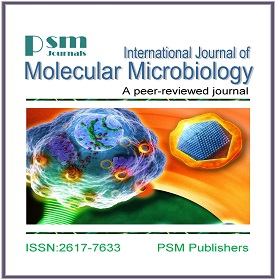Recombinant Protein Production in Plants: Biofactories for Therapeutics
Keywords:
Recombinant Protein, Plants, Biofactories, TherapeuticsAbstract
EDITORIAL
The infectious diseases are commonly caused by disease-causing microorganisms and it may lead to the death. The tool for recombinant proteins production is achieved by the advent of recombinant DNA technologies and these recombinant proteins are used as therapeutic agents to cure the infectious diseases. Many expression systems for the pharmaceuticals production have been developed through which various types of immunoglobulins, enzymes and edible vaccines are synthesized that are used as prophylactic or as therapeutics. Biopharmaceutical and edible vaccines derived from the plants have several advantages as it involves simple and convenient approach, provide high yield of proteins, have lower storage and production cost, the removal of the pathogen contamination, the less processing required, as well as the safe delivery of the oral vaccines (Fahad et al., 2015). In 1989, immunoglobulins derived from transgenic tobacco plant were assembled as functional antibodies (Hiatt et al., 1989). Several studies confirmed that plants can be used to produce edible vaccines.
In plants the expression of the biopharmaceutical proteins is based on both the stable and transient expression systems. Several problems are associated with nuclear transformation including gene silencing (Chebolu and Daniell, 2009), low yields, a high risk of the transgene contamination etc. The use of chloroplasts transformation for the industrial production of pharmaceutical compounds like antibodies, growth factors, cytokines, and antigens, enzymes and hormones is an alternative strategy (Daniell et al., 2009; Lössl and Waheed, 2011). Thus, high-throughput methods that couple gene identification and phenotype observations are required to put potential products into the hands of plant breeders to get better varieties (Hood and Requesens, 2012; Rech et al., 2014; Sukenik et al., 2018). Recent developments including optimization of environmental conditions are crucial for efficient recombinant protein production in transient expression systems (Fujiuchi et al., 2016).
Plants act as an ideal biofactroy for the synthesis of antigens which play an important role in development of diagnostic test, as well as it is important to produce vaccines that are directed against diseases with epidemic potential. The expression of vaccine linked protein in transgenic form of tobacco plants enhanced the usage of plants as biofactories (Hiatt et al., 1989). Plant based vaccines can be stored at room temperature for long time in dried form. Efficiency of plant based vaccines has also shown great importance in animal models. Many reports have shown the high immunogenicity of vaccine candidates in different models of animals. Many vaccines and therapeutic compounds can be obtained from plants by many ways in green house, in the field and in cell or root cultures. Government should allocate more funds for plant based vaccines research and for further commercialization.




